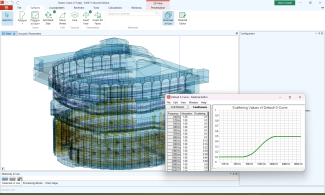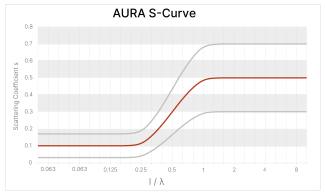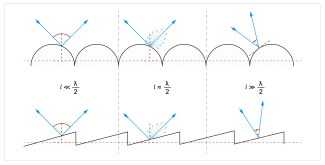New study explores the basis for estimating scattering coefficients

AFMG is proud to present a study titled "Show Your Scattering Coefficients", co-authored by AFMG's own Stefan Feistel and room acoustic authority Michael Vorländer of the institute for hearing technology and acoustics (IHTA) at RWTH Aachen University. The paper consolidates the work presented at the ASA 2022 fall meeting in Nashville, TN, USA.
The research explores the estimation of scattering coefficients when specific surface scattering data is unavailable and gathers that, indeed, a ‘best guess’ can be made when estimating scattering coefficients in the context of acoustics simulations. These findings directly contributed to the development of the default 'S-curve' utilized in EASE 5's AURA room acoustic calculation module.

Key insights from the study:
- Shape-based estimation: When precise data is unavailable, a scattering coefficient can be estimated based on the structure's shape and size. For example, round aperiodic shapes will generally result in smoother scattering coefficient curves compared to periodic angular shapes.
- Default values – a baseline approximation: In the absence of any specific information, a scattering coefficient of 0.1 can be assumed for frequencies below l/λ = 0.5. Around this frequency, a sigmoid function increase up to approximately 0.5 or 0.6 can be presumed.
- Implications for modeling and auralization: The study emphasizes how scattering effects influence perception and underscores the need for accurate modeling. By refining scattering prediction, acoustic simulations can become more effective, enhancing designs for concert halls, classrooms, and other listening environments.

At AFMG, we continuously invest in advancing the field of acoustic simulation, prioritizing in-depth research to ensure unparalleled accuracy. This dedication to understanding sound behavior translates into tools that empower our users to confidently predict real world acoustic outcomes.
Citation Michael Vorländer, Stefan Feistel; Show your scattering coefficients. Proc. Mtgs. Acoust. 5 December 2022; 50 (1): 015003. https://doi.org/10.1121/2.0001816
See the research in action!
- Download the article (access is free)
- Get the free trial of EASE 5
- Purchase a full EASE 5 license.